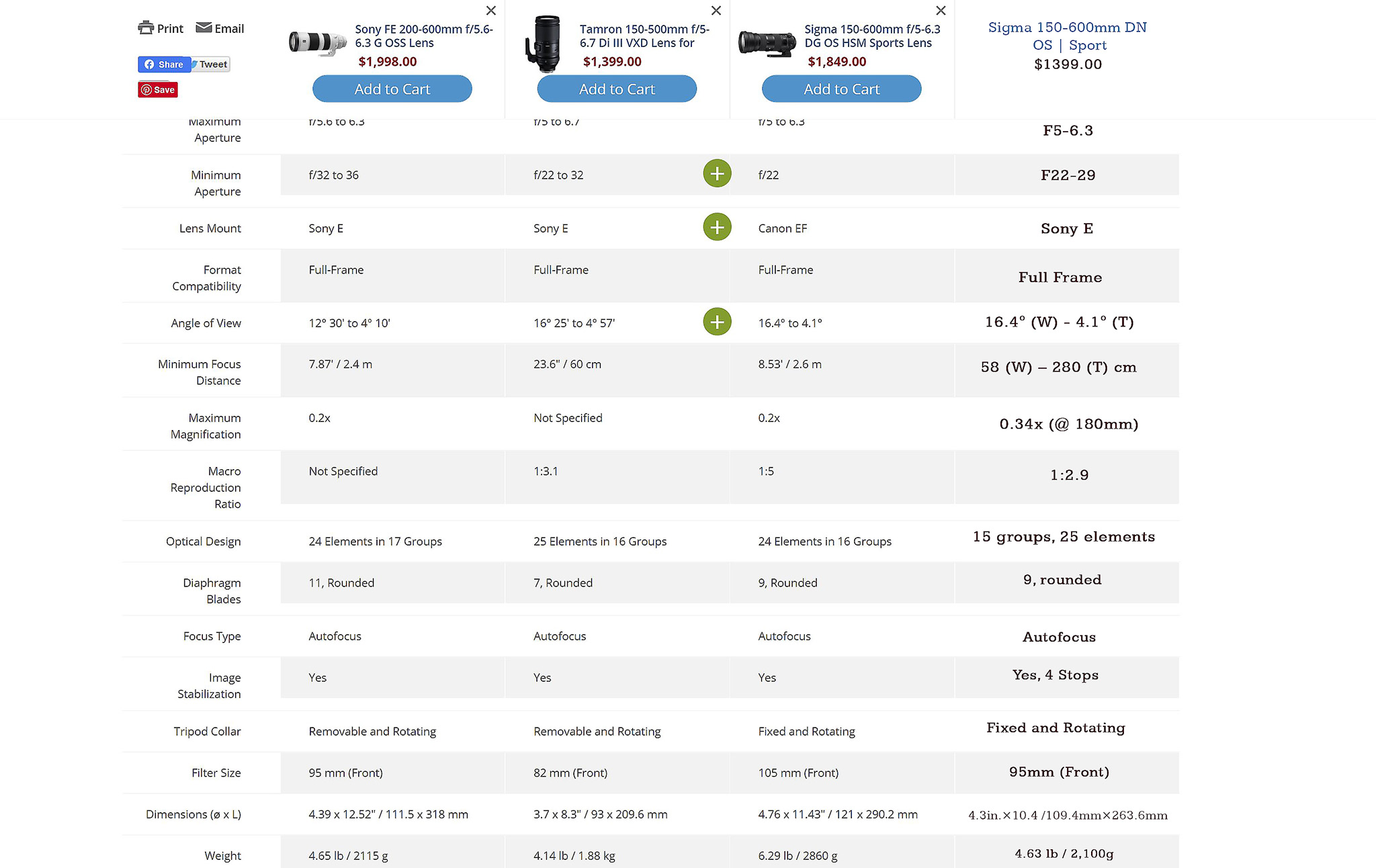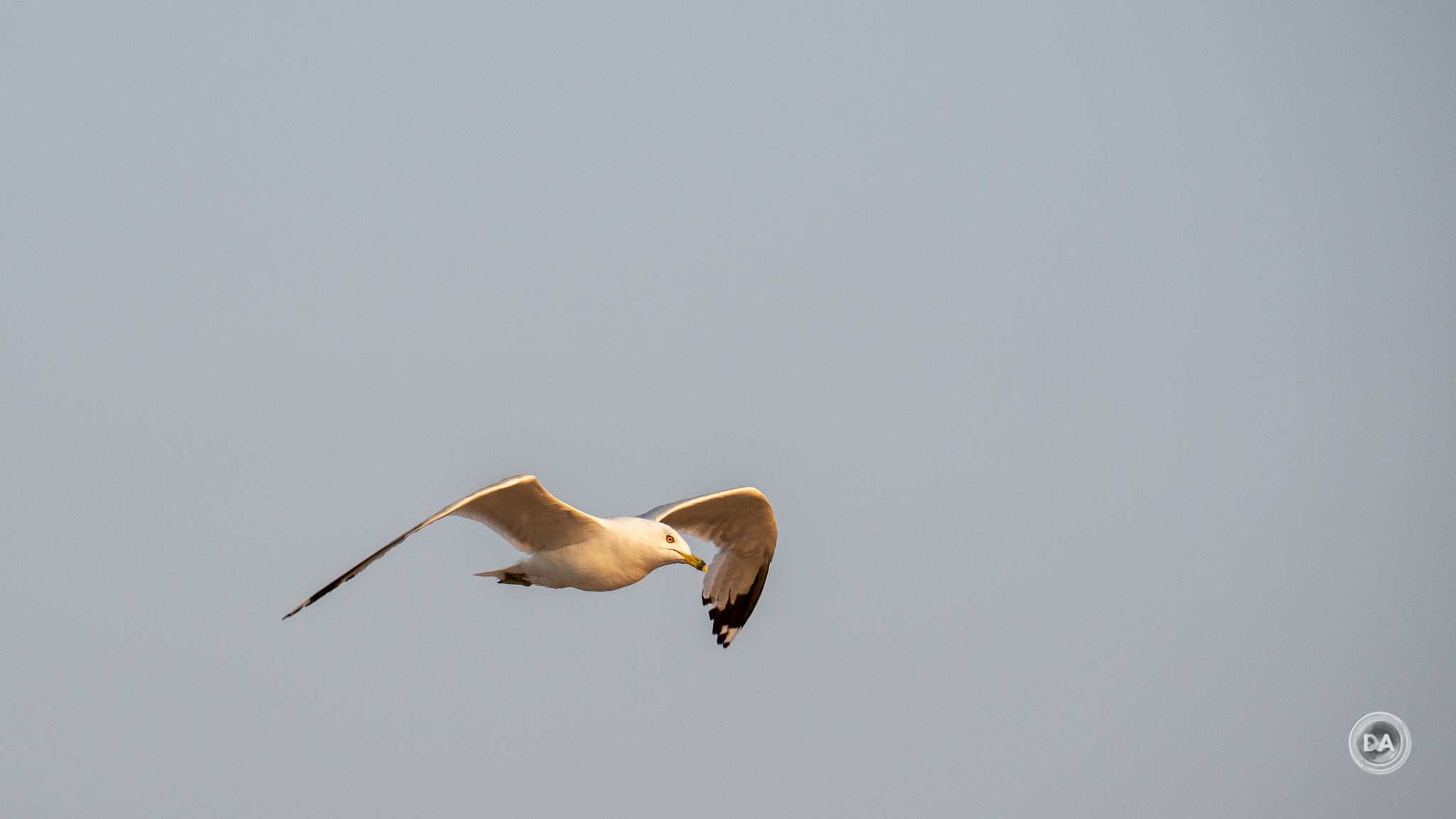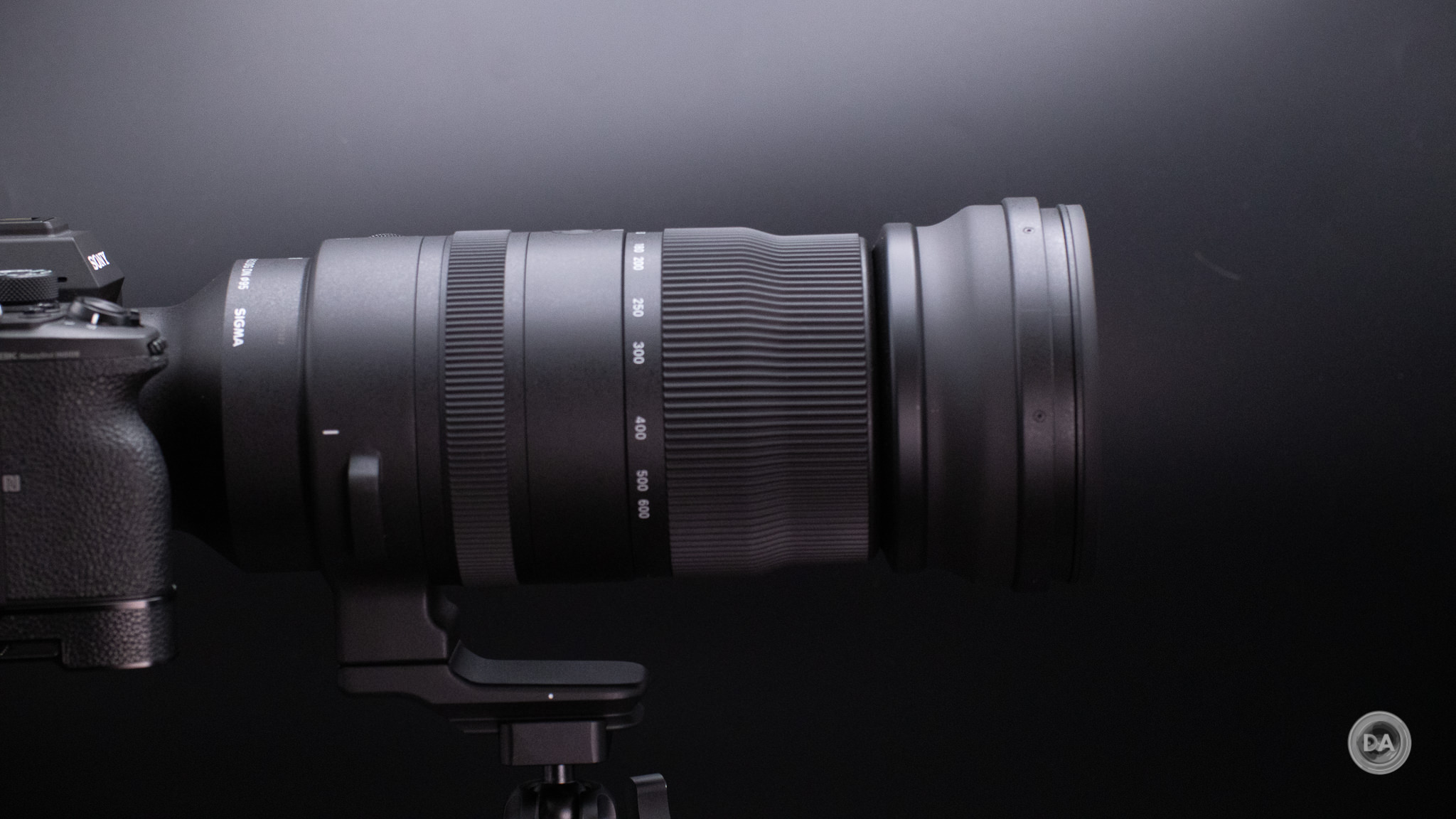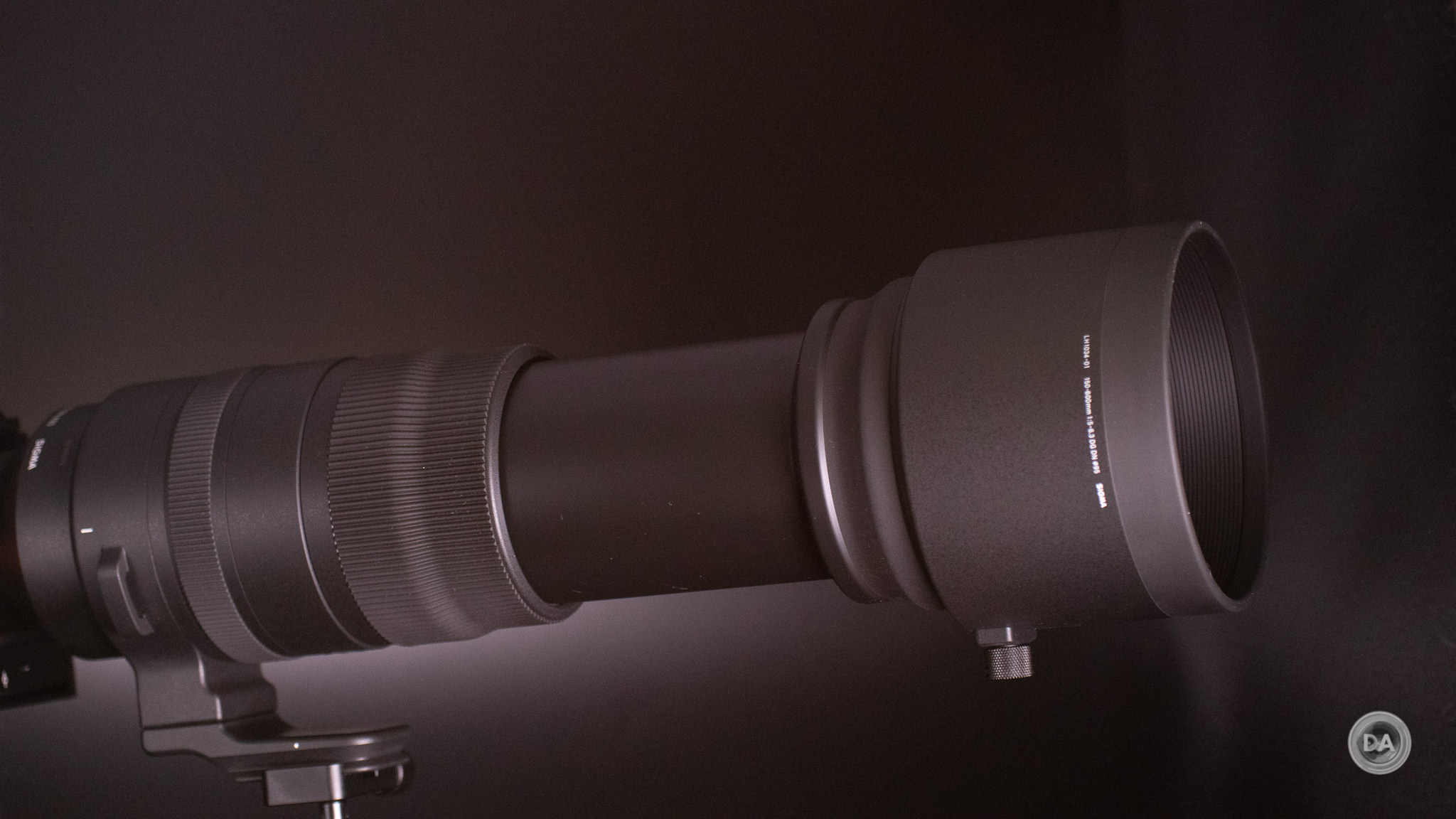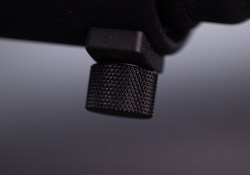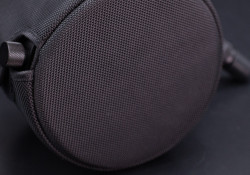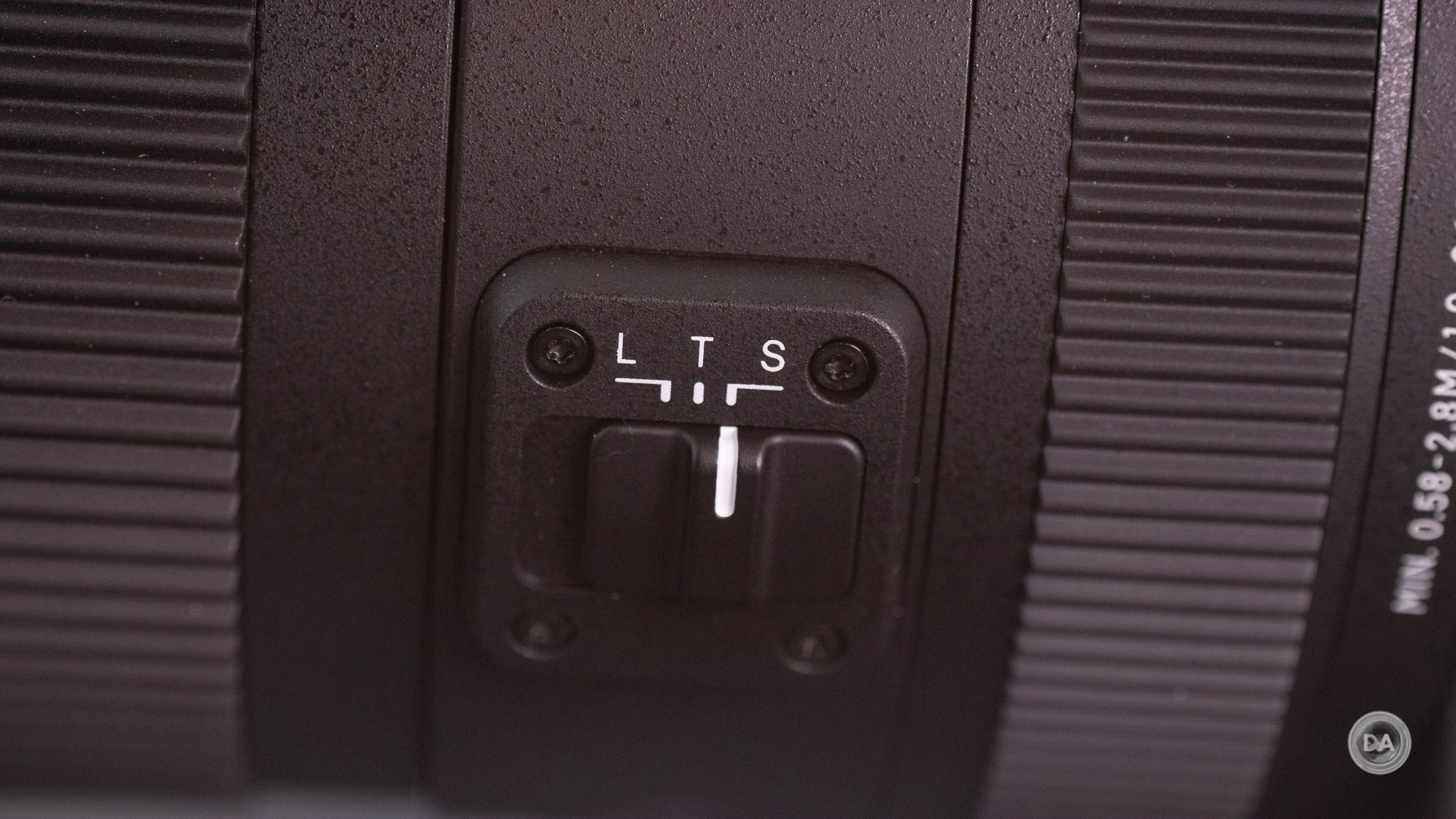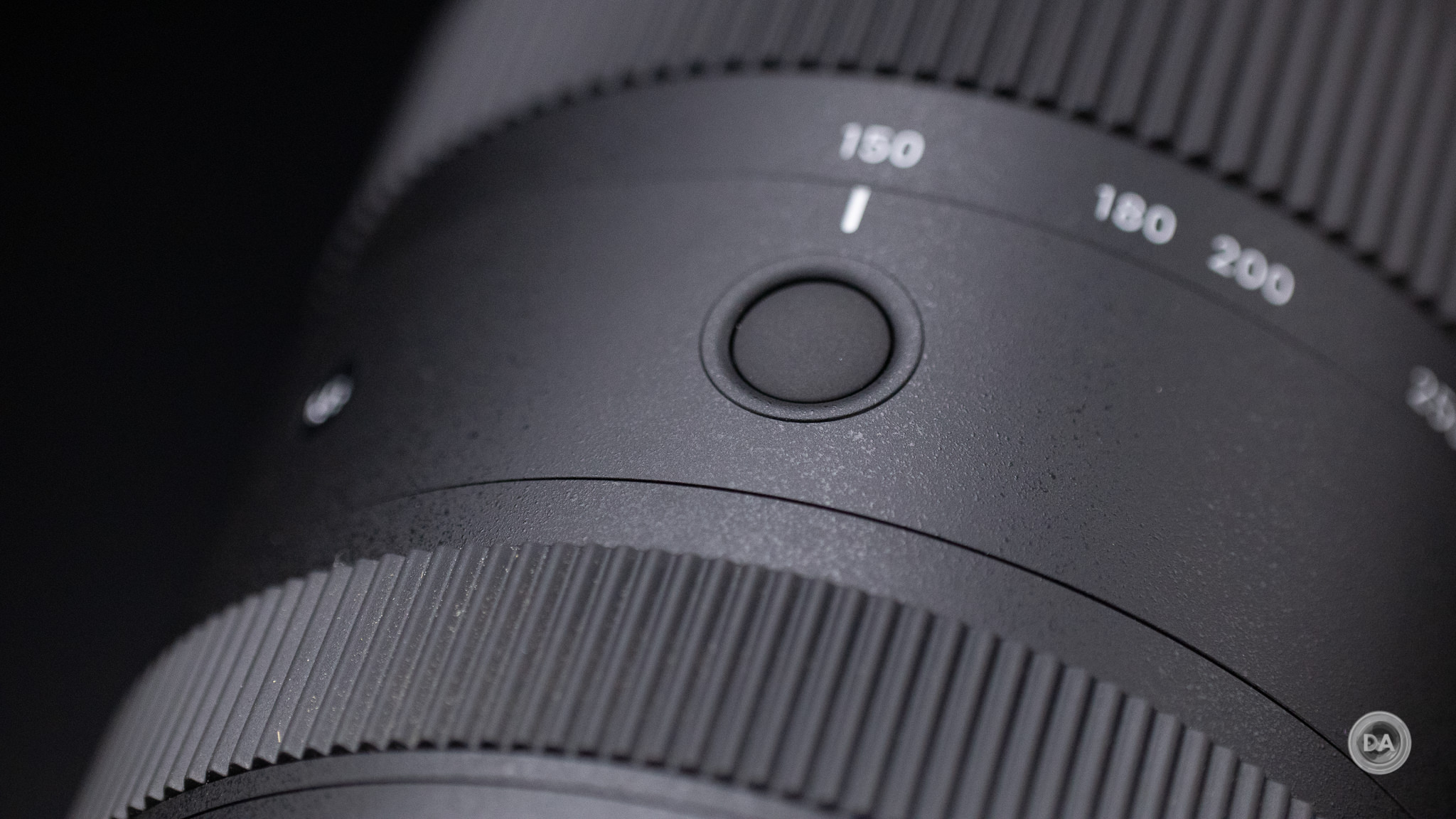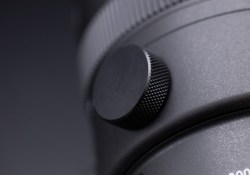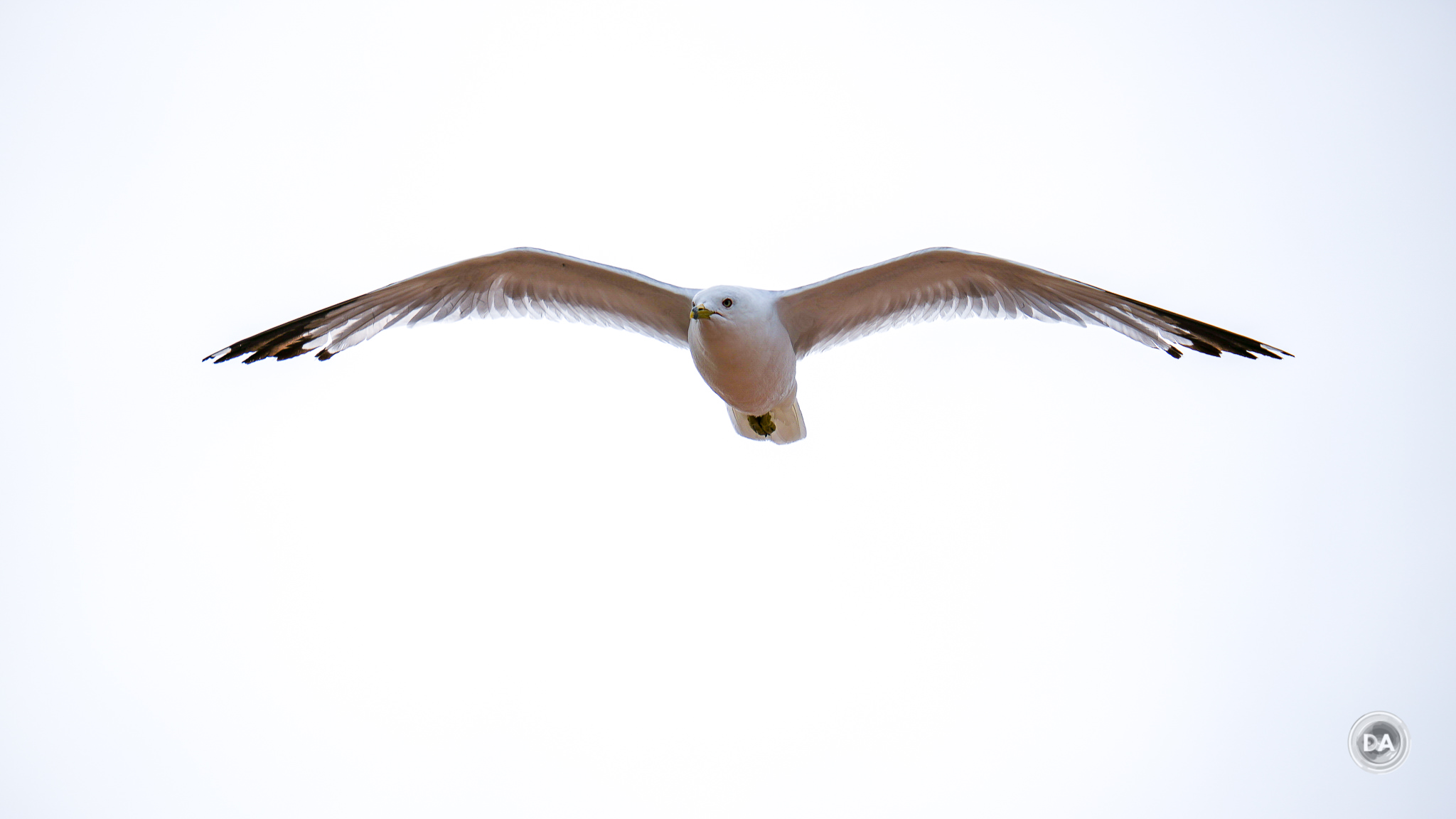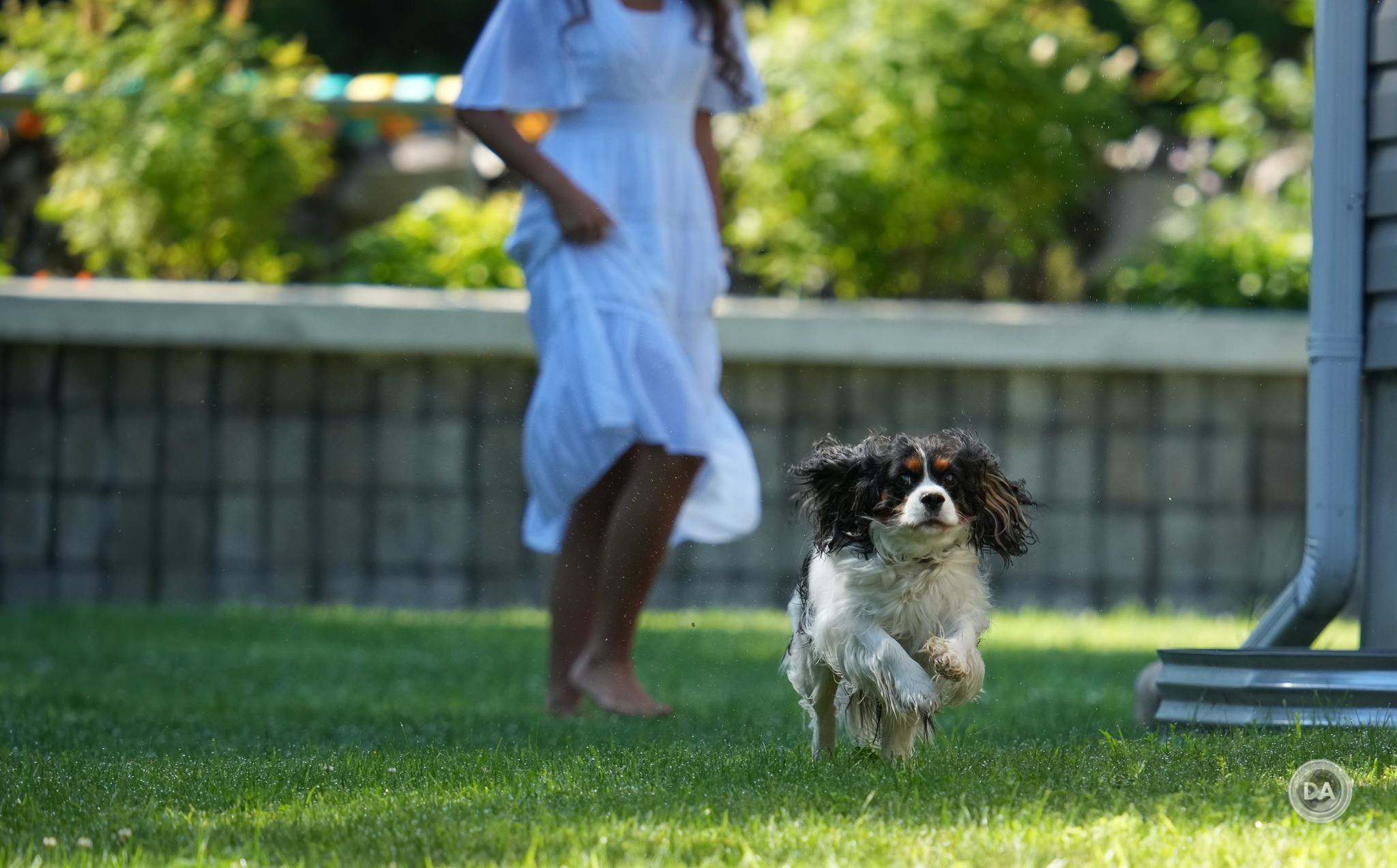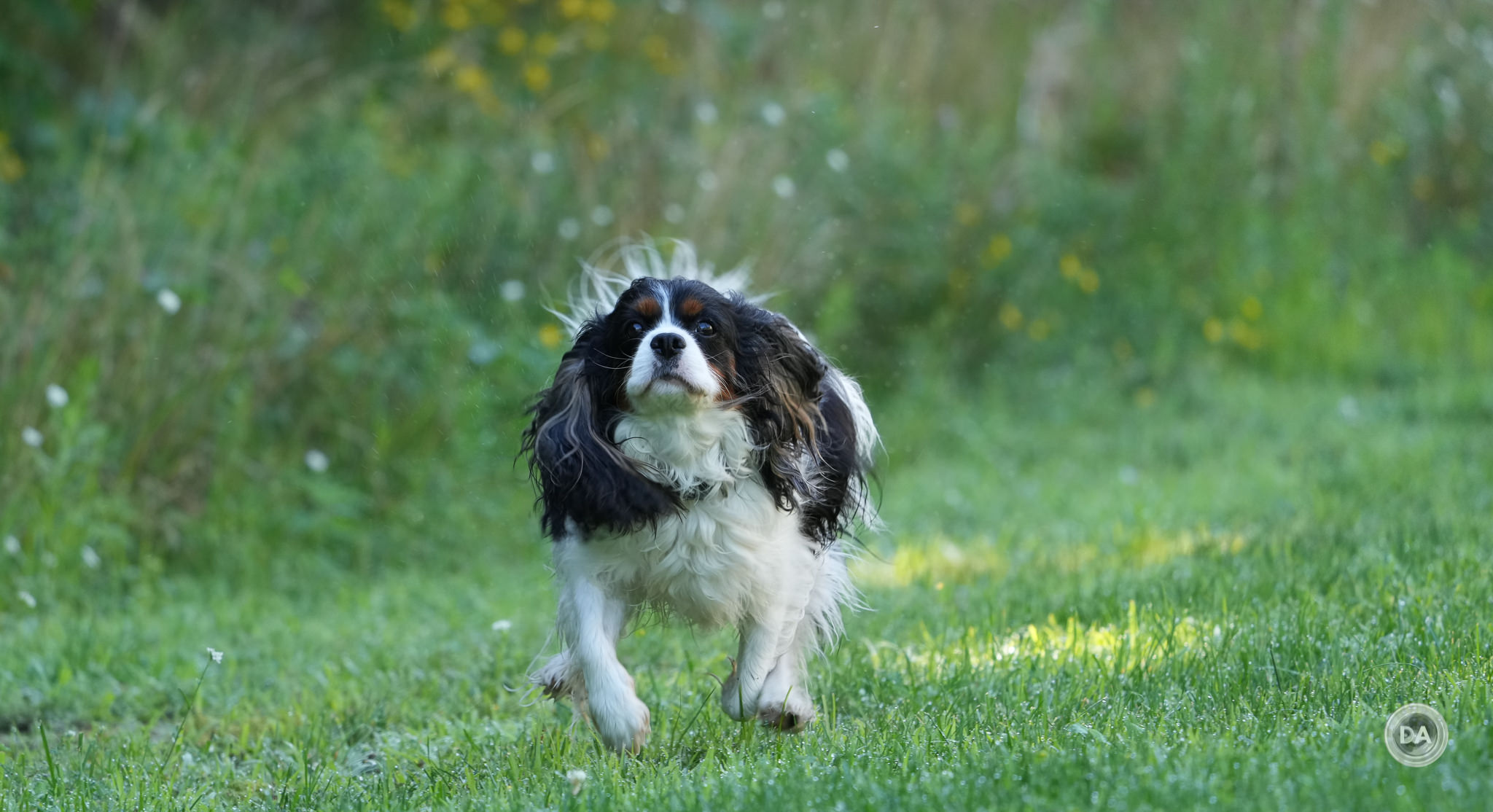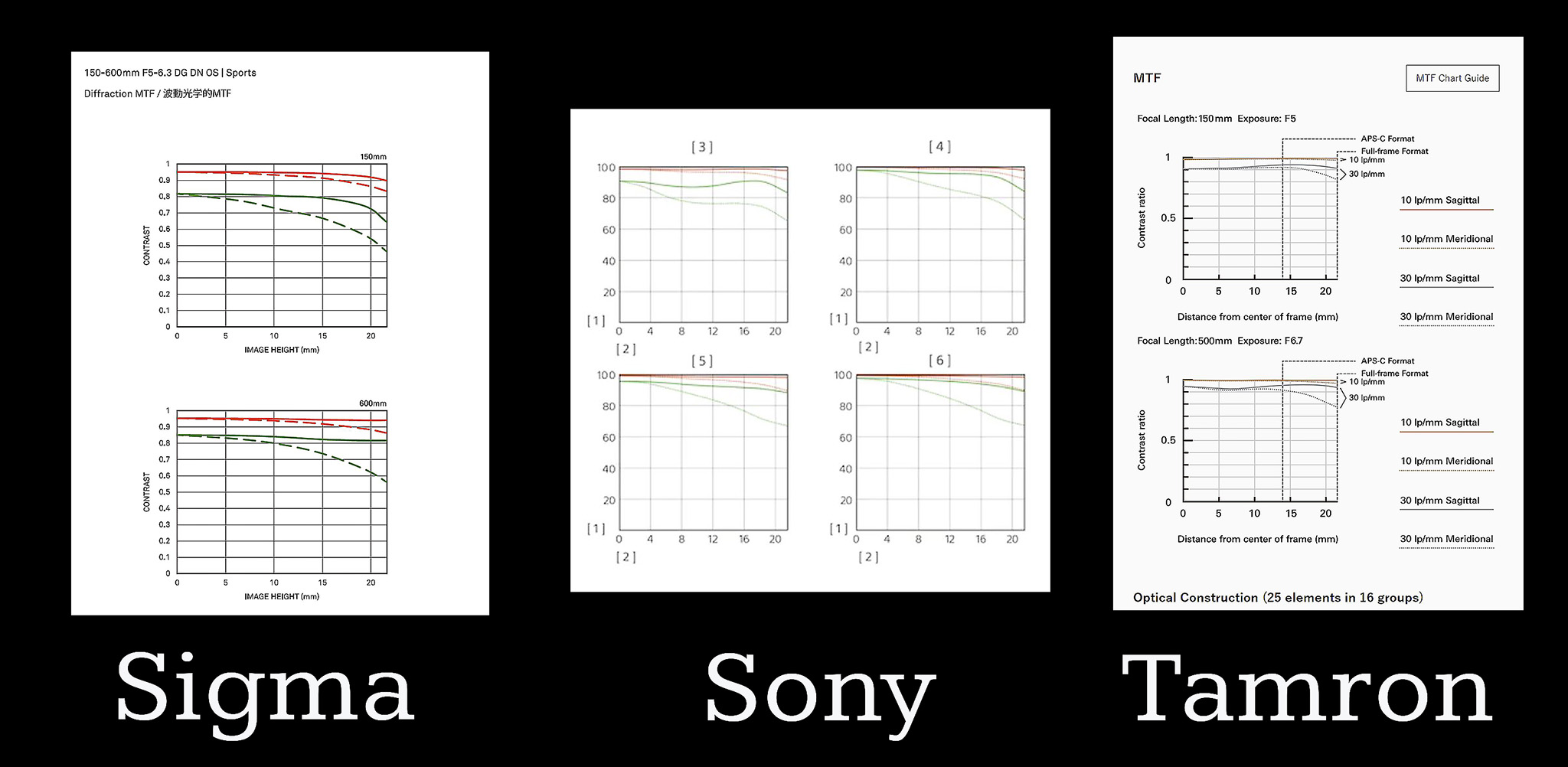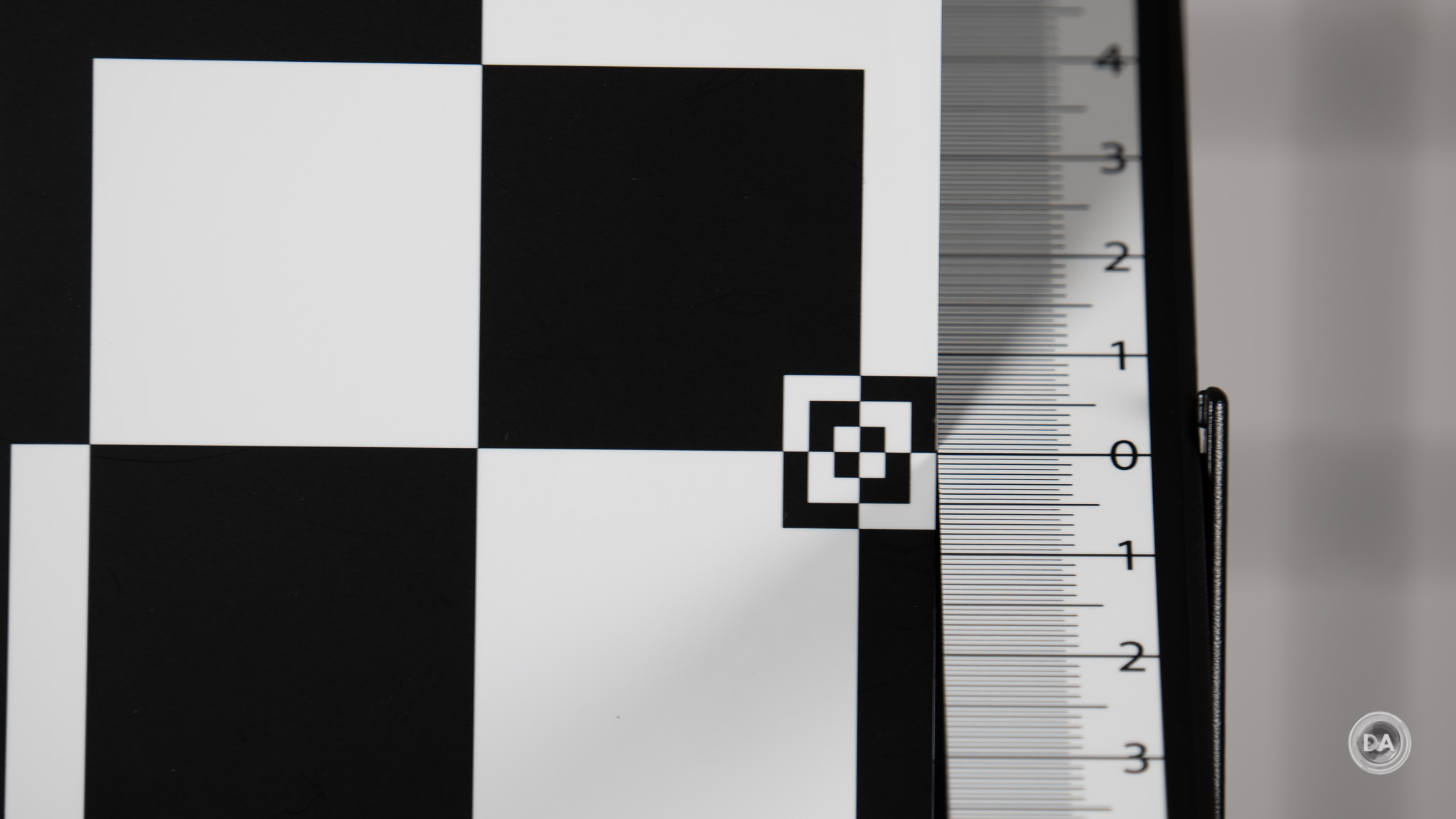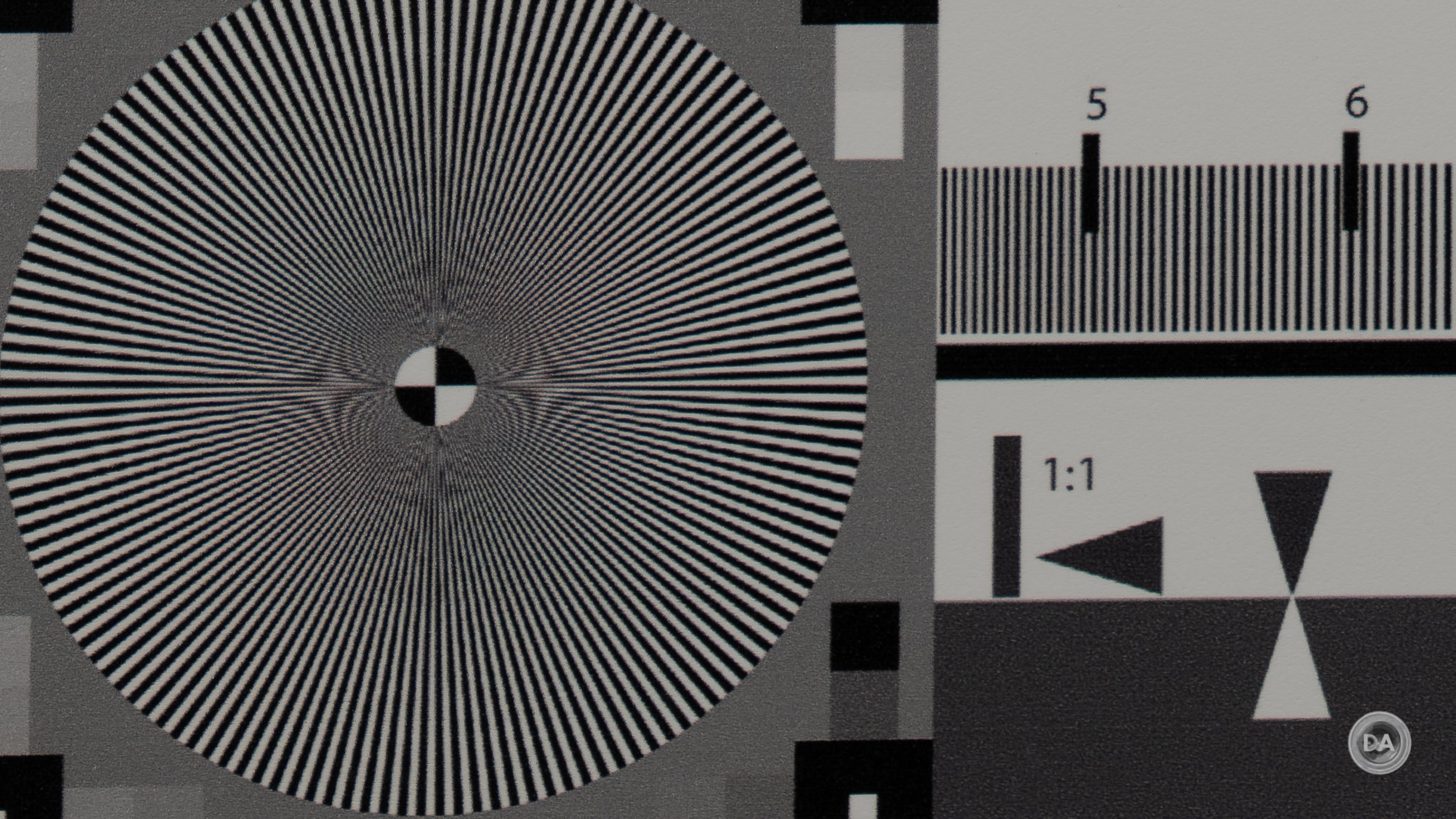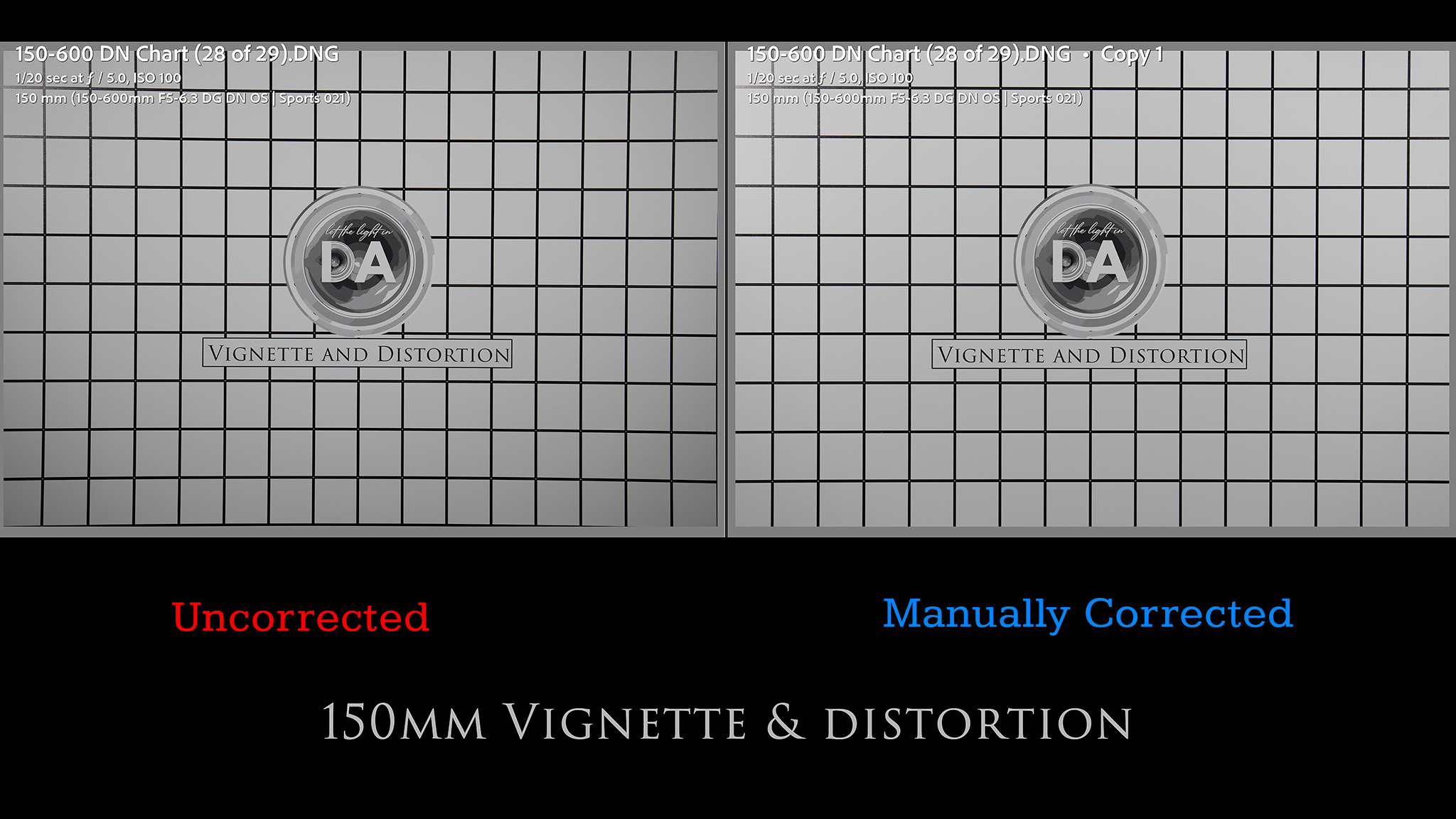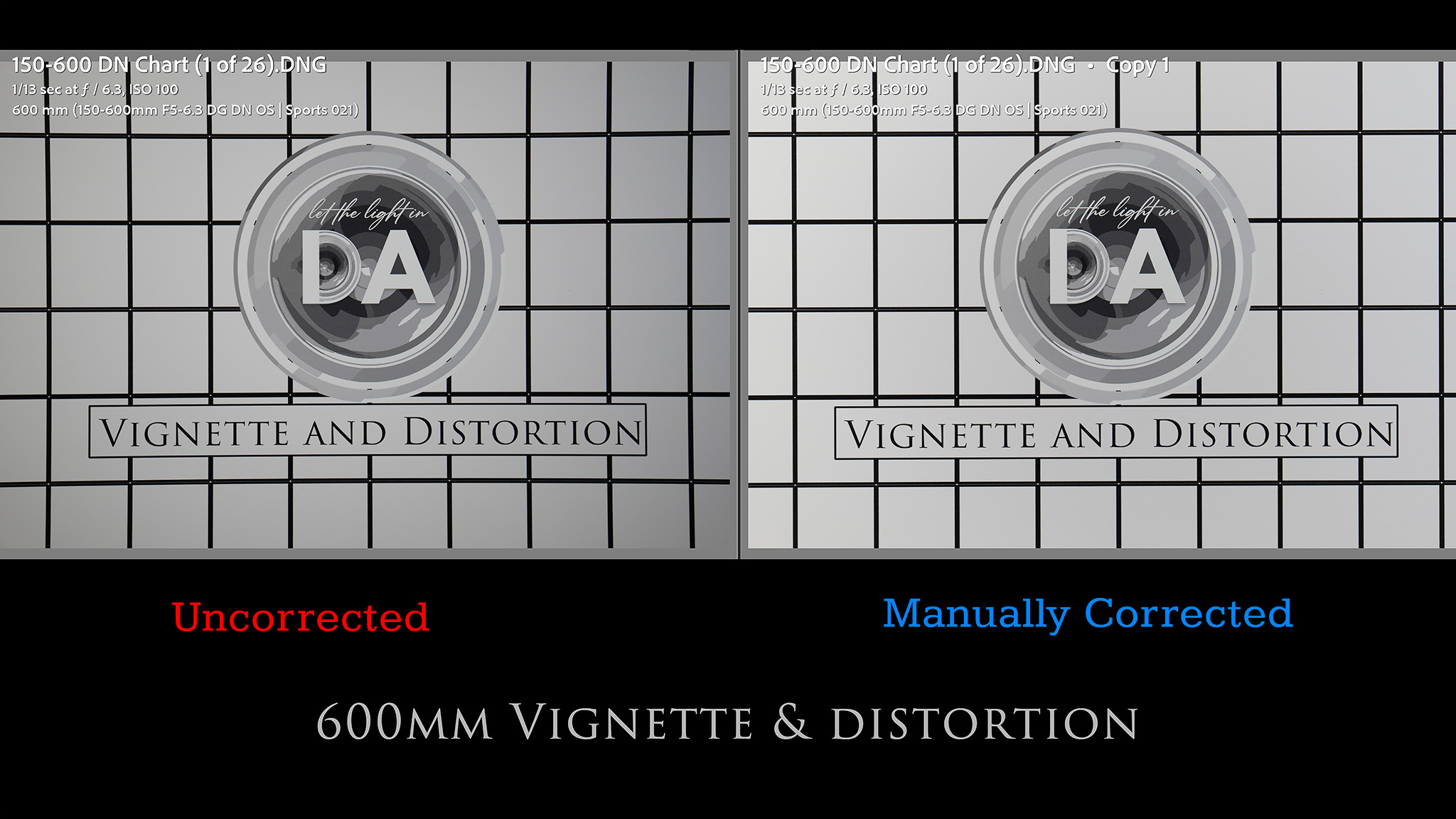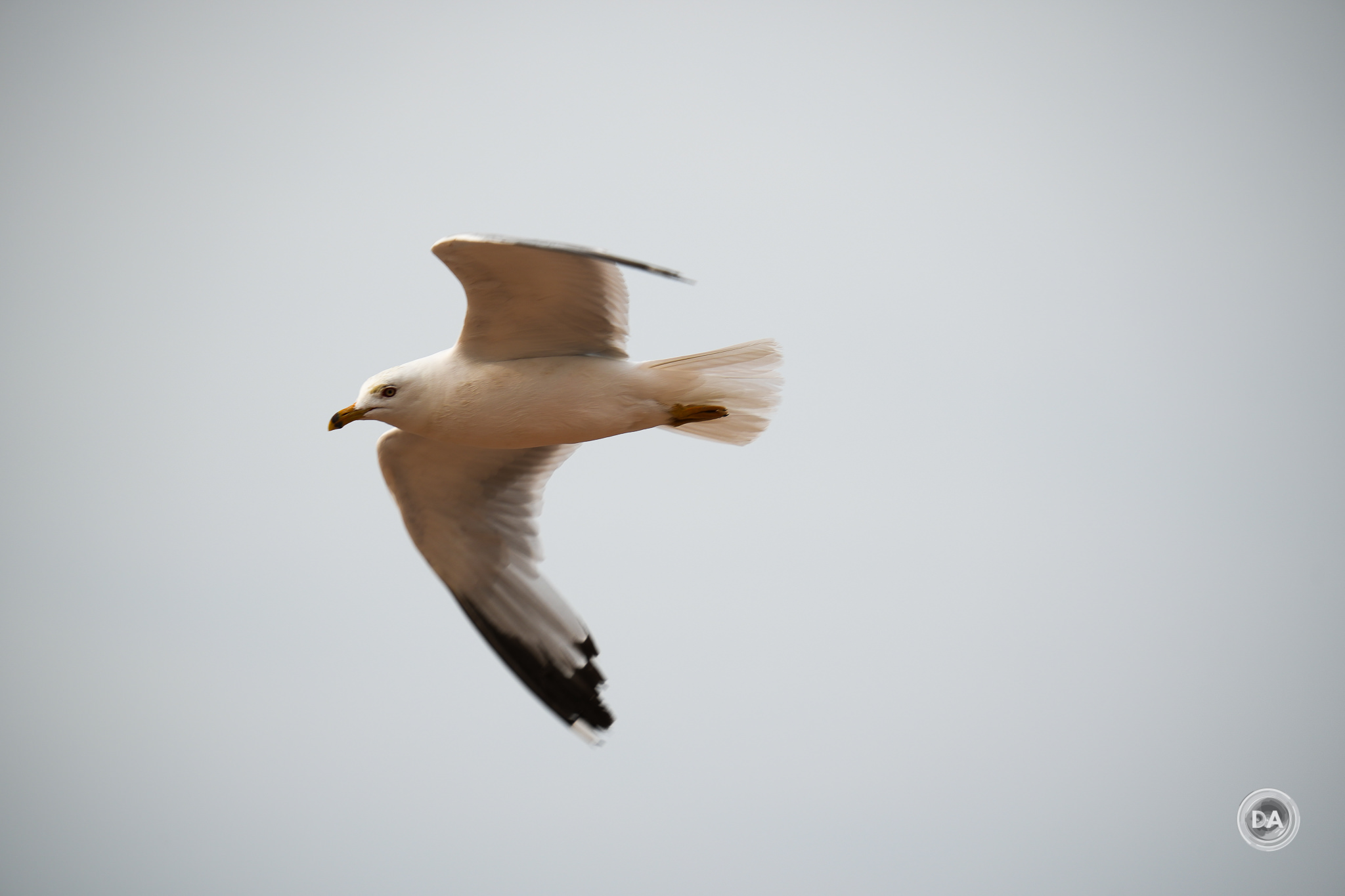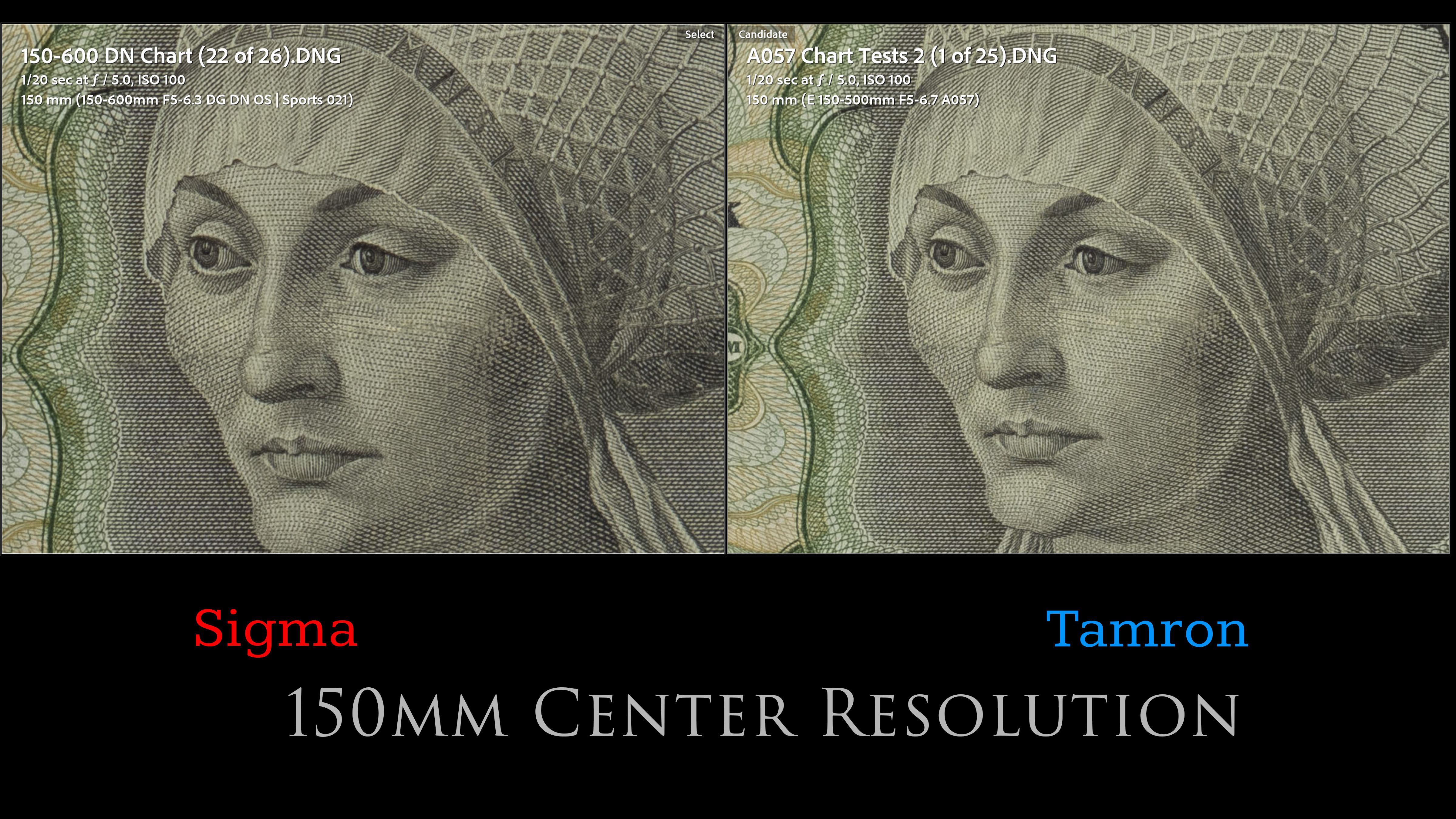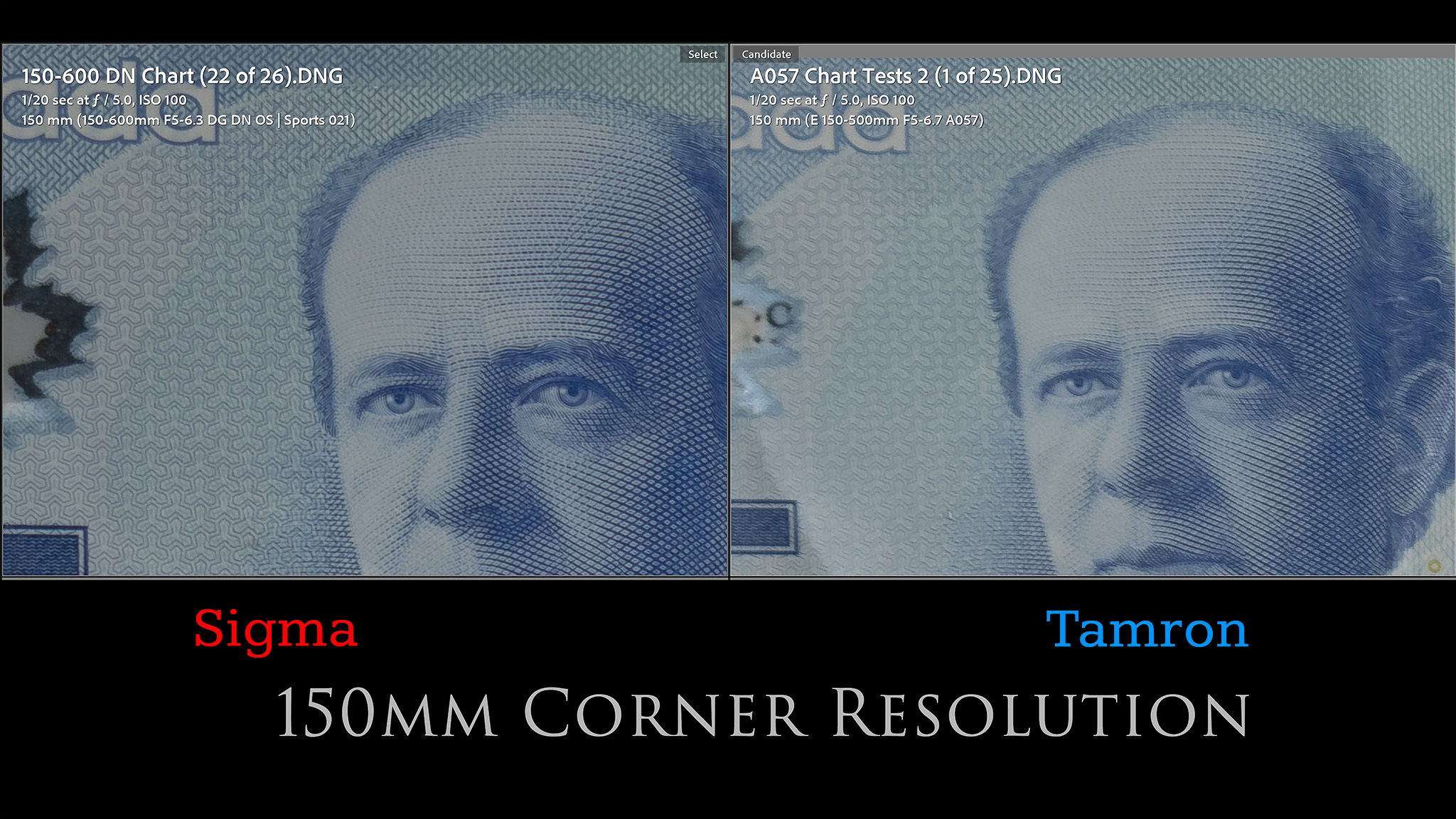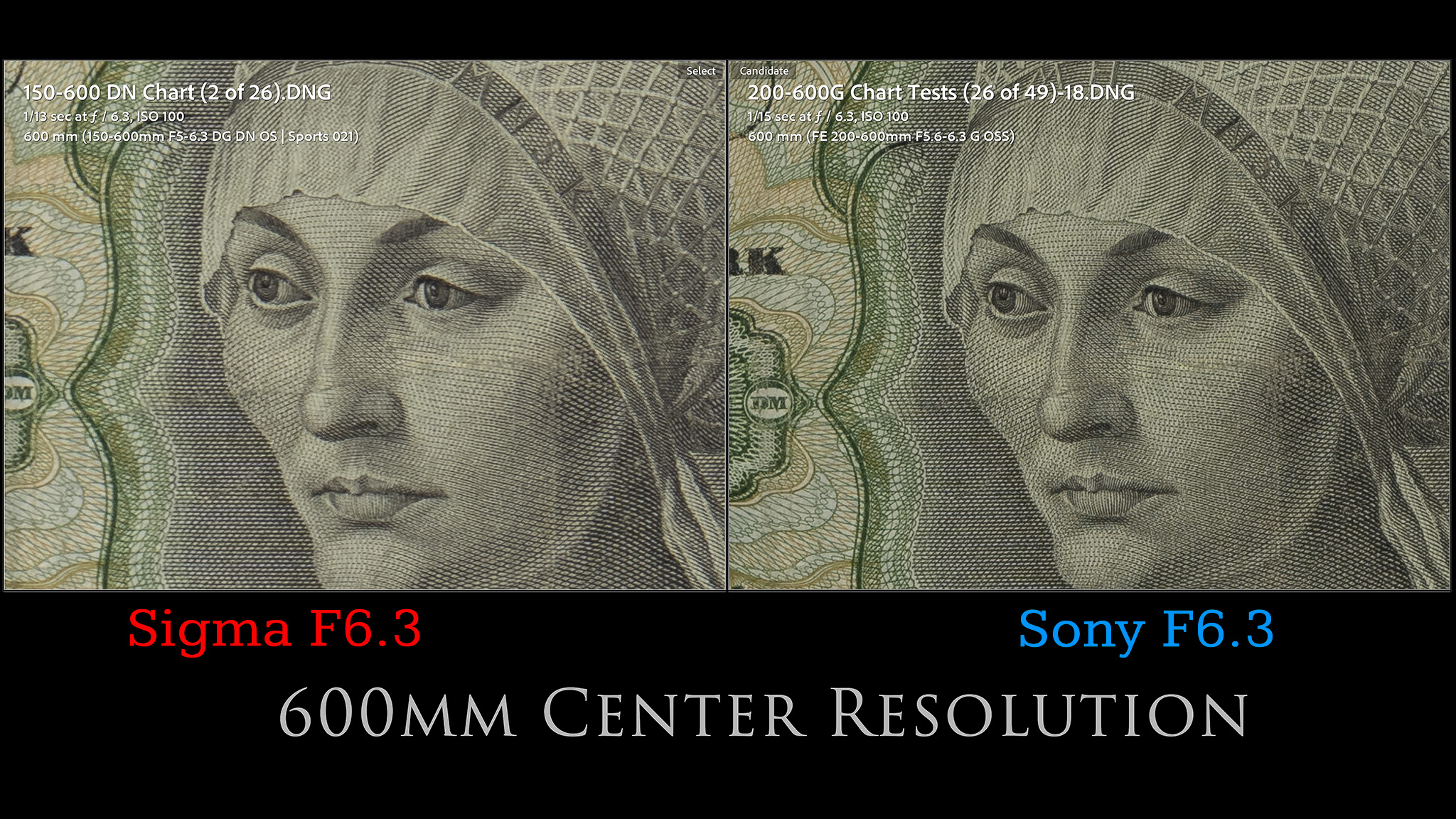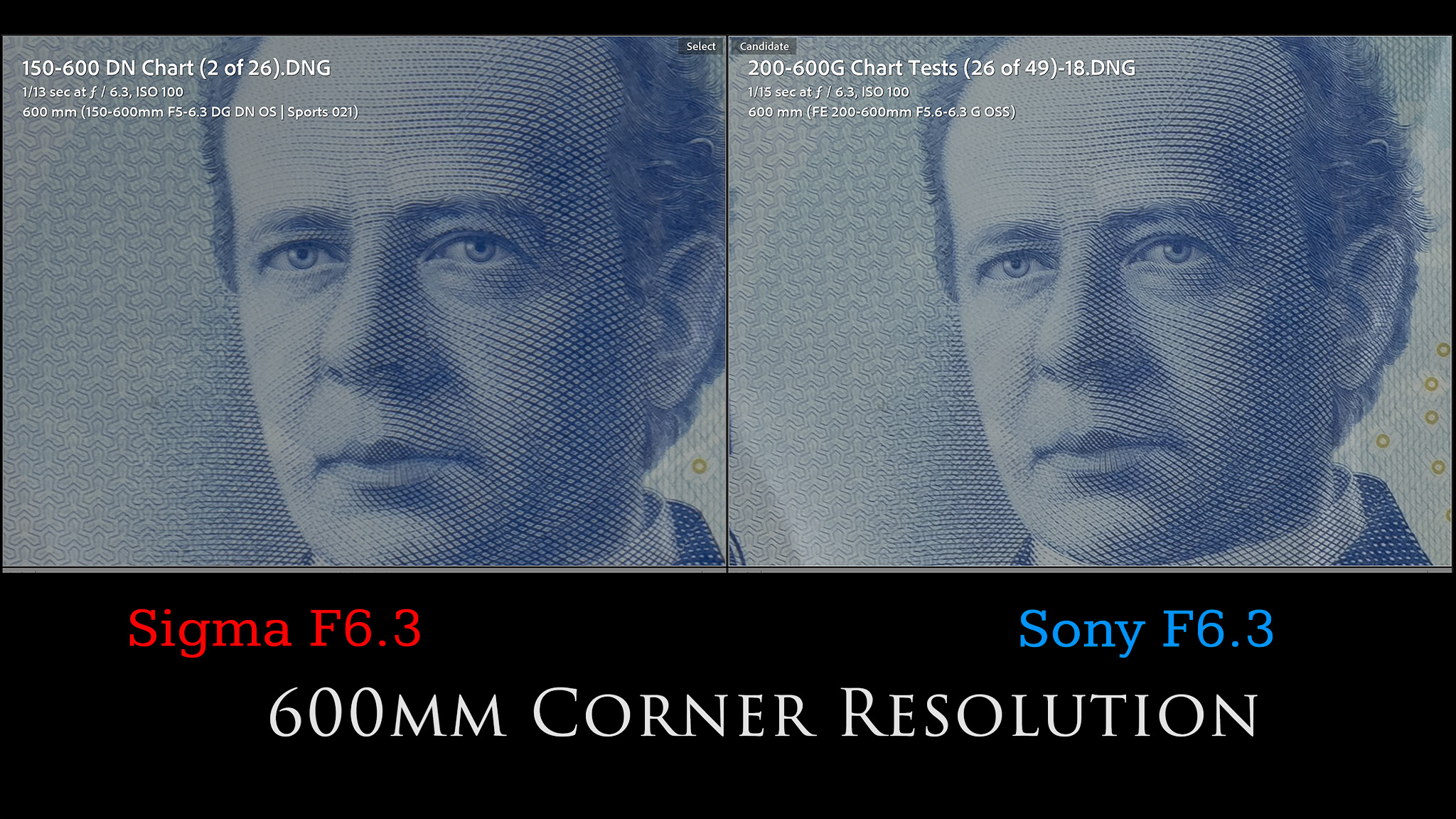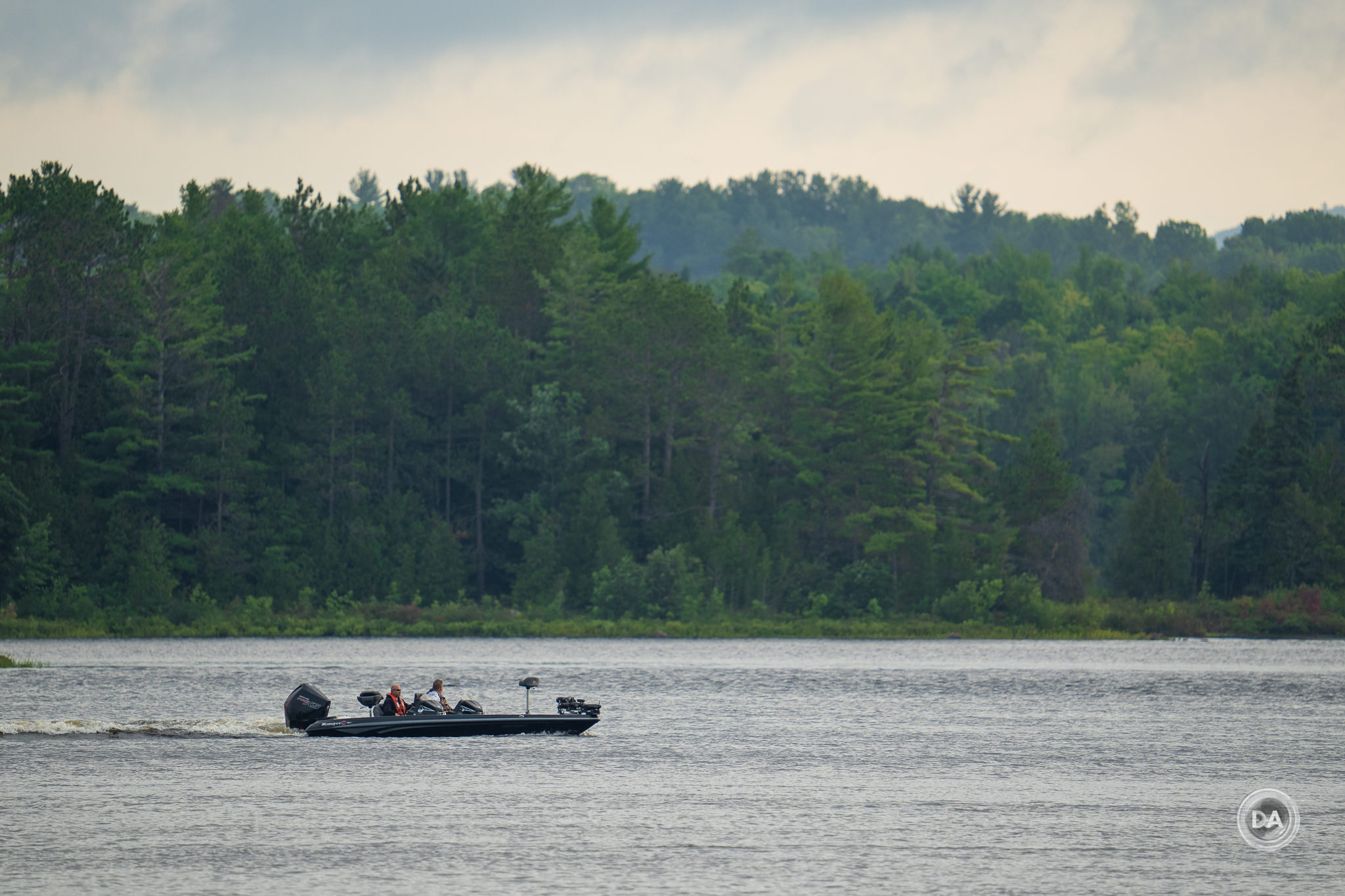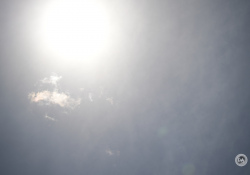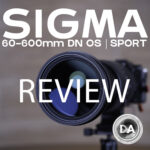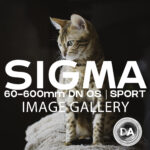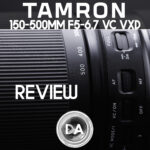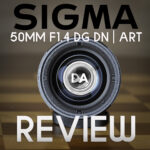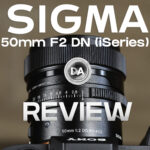The Sony telephoto wars are heating up! For a long time the big hole in the Sony lineup was anything over 200mm. I found Sony’s development of the FE 200-600mm F5-6.3 G OSS lens in 2019 very welcome because it gave Sony shooters the first long lens with a somewhat affordable price point. I gave it very high marks in my review and eventually purchased one for myself. The Sigma 100-400mm F5-6.3 DN OS (my review here) later came to market as an affordable alternative, though that lens is more of a cheaper alternative to the Sony 100-400mm G Master lens (my review here). The most recent challenger to the Sony FE 200-600mm OSS was the Tamron 150-500mm F5-6.7 Di III VC VXD (my review here), which made for a different alternative due to a different kind of design that resulted in a much more compact lens (and a fair bit cheaper). But now Sigma is dropping its greatest challenger yet; an optically excellent big telephoto that reaches all the way to 600mm – the Sigma 150-600mm F5-6.3 DG DN OS Sport. It “sports” a larger zoom range, has a great built and good autofocus, and really delivers on the optical end while still undercutting Sony in price. There are still some variables to consider here, but there’s no question that Sigma will make some waves with their new lens, which we’ll refer to as the Sigma 150-600 DN for brevity in this review. These tests and the photos shown in the review have all been done with the new Sony Alpha 1 which will serve as my benchmark camera for the foreseeable future (my review here). The 150-600 DN will also be released in a Leica L mount.
While Tamron has taken a unique approach to design on the Sony platform, Sigma has largely elected to go head to head with Sony offerings. This is a pretty traditional design that looks and behaves much like their DSLR equivalents, though with an important caveat. The new 150-600 DN is a bit smaller (11mm narrower | 27mm shorter) and significantly lighter (2100g) than the 150-600mm Sport (2860g) in, say, Canon EF form. One of my chief complaints about that lens (my review here) was it was very heavy, and, more importantly, the weight was distributed in such a way that one had to support a lot of weight quite far out from your body. It was a tiring lens to use for any length of time. I find the new 150-600 DN to be a much easier lens to use, and the balance is much better. It is still a large, heavy lens, but a far more accessible one, I think, and it is actually slightly lighter than the Sony 200-600 G (5g) despite having an additional 50mm of focal length. The new Sigma 150-600 DN is closer to the Sony 200-600 G in size, though having an externally zooming design means that the Sigma can retract smaller (about 55mm) and will be a bit easier to transport. The Tamron 150-500mm VC RXD remains the most compact option here at nearly 75mm shorter length retracted than the Sigma, though the Sigma has both 100mm of extra zoom range along with a slightly smaller larger maximum aperture (F6.3 vs F6.7). Here’s a look at some various comparison points:
Lenses like this as valued by a variety of photographers: those who shoot outdoor sports, wildlife photographers, and, in particular, those who enjoy photographing birds in flight.
The recent trend in zoom lens design has been to have different minimum focus distances for the wide and telephoto ends of the zoom range, which is true here as well. You can focus as closely as 58cm on the wide end and that distance grows to a fairly long 2.8m on the telephoto end. What’s interesting, though, is that maximum magnification is actually unleashed at the 180mm focal length, where you get an unusually high 1:2.9 ratio, or about 0.34x magnification, which is slightly higher than the 0.32x figure Tamron provides with their 150-500mm VXD lens, and a figure significantly higher than either the Sony 200-600 (0.20x) or the older Sigma 150-600 Sport lens (0.20x). Here’s a look at how much a marigold blossom fills the frame with that 0.34x magnification:
The Sony 200-600 G has been the king since it was released, but Sigma has gone toe to toe with Sony a number of times over the past year and a half and has done quite well. In this arena, however, the first party Sony has some built-in advantages. The first is this: it strongly seems that Sony is limiting teleconverter access on their platform to native Sony lenses. The 150-600 DN, like previous Sigma lenses, will have 1.4x and 2x teleconverters available on Leica L mounts, but not on Sony. The second big one is this: on Sony high speed bodies like my Alpha 1, the 200-600 G can take advantage of the blazing 30 FPS burst rate while enjoying real time tracking. With a Sigma or Tamron lens, the fastest burst rate I can get is 15 FPS with tracking; I can only get the 30 FPS if I turn off autofocus…which really defeats the purpose. I’ve tried balanced emphasis (my usual setup) along with release priority (which in theory should speed things up), but in either case I get exactly 15 FPS with autofocus turned on. The “good news” is that I saw a similar trend on previous lenses when I shot with an a9 or a9II, and the limit was exactly 15 FPS. That means you lose a bit less (relatively) if you shoot on an a9 body, and you won’t notice it at all with the current a7 or a7R series bodies. The playing field is not level, unfortunately, so Sigma has to overcome these obstacles. I lamented the same issues when reviewing the Tamron 150-500mm a few months ago. The good news is that I found the 150-600 DN to deliver very good autofocus results for tracking birds in flight, for example, so if those two obstacles I mention aren’t deal-breakers for you, the Sigma 150-600mm F5-6.3 DN OS Sport is going to be a very compelling option. Read on or watch either my long format definitive or shorter standard video reviews to find out why:
Follow Me @ Patreon | My Newsletter | Instagram | Facebook | DA Merchandise | Flickr | 500px
Thanks to Sigma Canada (Gentec) for getting me an early loaner of the lens. As always, this is a completely independent review.
Sigma 150-600 DN Build and Handling
Sigma divides its lenses into three different categories: Contemporary, Art, and Sport. The Contemporary lineup gets the lowest level of build and weather sealing, while the lines are a little more blurred with the Art and Sport lenses. Typically, however, the Sport lenses do have the highest grade of weather sealing because they are the most likely to be used in inclement conditions. Many sporting events will take place regardless of weather conditions, and, surprisingly enough, most wildlife is waterproof! With that in mind, the Sigma 150-600 DN Sport has Sigma’s highest grade of weather sealing. While I haven’t seen a diagram yet (I’m doing this review before the public release of the lens and before any such diagrams are available), Sigma does claim a thorough “dust and splash resistant structure” which combines internal seals with a gasket at the lens mount and a water and oil repelling coating on the front element.
The lens feels very well built, with a lot of metal components (brass mount, magnesium tripod socket, and aluminum body sections) combined with a few “Thermally Stable Composite” sections, a kind of polycarbonate (engineered plastic) that has similar thermal expansion rates to aluminum and thus behaves similarly in various weather conditions. This helps maintain the weather sealing and performance of the lens while also helping shave a bit of weight. The DSLR version of the lens was probably unnecessarily heavy due to less nuance with the construction materials.
This is an externally zooming lens, so, while the retracted length of the lens is 263.6mm, the lens barrel does extend by a full ten centimeters (100mm), making the extended length actually longer than the Sony 200-600 G by about 65mm. Here’s a look at that extension:
Sigma designed this to be a “dual-action” zoom, meaning that you can either twist the zoom ring or just grab the lens hood and treat it like a “push-pull” design.
There’s also a significant lens hood here (about 82mm long), which makes for a really long combination when you have the lens hood attached and the lens fully extended. That’s about 45cm in overall length, or roughly 1 1/2′. The good news is that there isn’t nearly as much weight out front and that the lens feels much easier to support when zoomed out. The large hood is actually fairly lightweight. It attached via a tension knob on the bottom (it doesn’t bayonet on), and there is a nylon cover that goes over the lens hood when you have that attached or reversed for storage. Sigma also includes a traditional pinch cap in the box, though that is hard to access if you have the lens hood mounted (it’s quite a ways in there!). The lens hood is ribbed inside and, as is common with long telephotos, has a rubberized rim that will allow you to stand the lens on the lens hood (which is much more stable a position than standing it up on the rear lens cap).
A large nylon padded case with a carrying strap is also included. Sigma does go the extra mile in the presentation of their lenses, and they are proud that their products continue to be fully assembled in Japan.
Worth noting is that the front element is a large 95mm, but that is actually the size that the Contemporary version of the lens had on DSLRs, as the Sport version had an extremely large (and hard to find) 105mm front filter size. The 95mm size is shared with the Sony 200-600 G. 95mm filters are a bit expensive, but much more common than 105mm filters.
Sigma debuted a new switch on this lens, but one that I’m a little ambiguous to. They call this the “Zoom Torque Switch”, and it mimics what some others have done with a tension ring. The “S” (Smooth) position allows the zoom action to be very free. If the lens is pointed down it will almost immediately extend to the 600mm position. The “T” (Tight) position increases the tension of the zoom ring. Zoom creep is gone, but you have to be really intentional about moving the zoom ring, as there is a lot of friction on it. This will allow you to hold a preferred position, but still move the zoom ring if desired. The L (Lock) position only locks at the 150mm position.
In practice, I find the switch to be a little hard to use. It is located between the focus and zoom rings, but in a very low position. There’s not really an easy or natural way to access it, which often means I’m turning the lens to the side to visually see the switch. Moving between the Smooth and Tight positions requires a lot of force, and, of course, you can only engage the L option if the lens is fully retracted. I prefer both the tension rings I find on the Canon or Sony 100-400mm lenses and the clutch mechanism that Tamron employed on the 150-500mm VXD which allowed for near instant locking at any position. I found both options much more natural to use in the field. At the same time, I’m glad the option is here, as different situations benefit from different degrees of tension.
Like the Sony telephotos, the 150-600 DN employs the Focus Hold button in three different positions, meaning that you have easy access to one regardless of how the lens is rotated.
Like Tamron, Sigma employs a tripod foot that is Arca-Swiss compatible, meaning that it can be directly mounted onto a tripod without the need for a quick release plate. For some reason Sony (and Canon) do not employ this Arca design…and I’ve never understood why. Unlike Tamron, Sigma’s tripod collar is not removable (a downside), but on the upside it does employ very nice detents at the four cardinal positions, which does make it easier to rotate quickly and to find the proper position. The tripod foot itself is removable and replaceable, though this is not a tool less operation. There are also strap connection points on either side of the tripod collar, which is also very welcome.
There’s a fairly standard bank of switches along the left side of the lens fairly near the lens mount. This is quite a large lens, obviously, and so I was fairly surprised to find this section felt a little cramped. The tripod collar is raised on one side, and the lens quickly slopes away on the other side towards the fairly narrow Sony lens mount. The top switch (AF/MF) is a fairly good size, but the other three switches are smaller, fairly flush, and a little stiff to operate. The first of these is a focus limited with three options, including Full, 10m to infinity, and minimum focus to 10m. You can obviously increase focus speed by employing this, though I did find that focus was fast enough that I never reached for it. The third switch down is a three position switch for different OS (optical stabilizer) modes. Mode 1 is the Standard mode, while Mode 2 should be utilized while panning, as one axis of stabilization will be turned off to provide for smoother side to side panning. The third position is just an OFF switch for the stabilizer. The OS is rated at four stops, and it is essentially impossible to distinguish between what the lens OS does and what the camera’s IBIS (In Body Image Stabilization) does. You can’t turn off the lens’ OS without turning off the camera’s IBIS. I can’t tell you whether the two systems work in conjunction or not. The OS seems to work fairly well, though, and I would probably rate it as slightly more effective than what I saw on the Tamron 150-500mm (a more stable viewfinder experience) and roughly similar to what I see on the Sony 200-600mm. This 1/13th second shot at 600mm isn’t tack sharp but also doesn’t show any real motion blur. That’s about 4.5 stops of assistance.
Where things get a little confusing is that the final switch is dedicated to custom modes (OFF | C1 | C2). On DSLRs you could buy the Sigma USB dock and use the Sigma Optimization Pro software to tweak some functionality (including the function of custom buttons), and, while that same functionality is available to Leica L mount customers, it isn’t for Sony shooters (who make up the lion’s share of the market). That means that function of these switch positions is fixed, and they are really just more OS options. C1 prioritizes stabilizing the viewfinder (probably a good option if you’re shooting video or just have shaky hands), while C2 is called “Moderate View” and seems to focus more on stabilizing the image at capture and less on stabilizing the viewfinder. This final option option gives you the most stable results on your shots, but in most situations having a shaky viewfinder image at 600mm just complicates things. C1 does a nice job of really keeping the viewfinder steady, though. If you don’t read the manual on the lens (or read my reviews), however, you’d probably have no idea what C1 and C2 do.
There are two rings on the lens – the typical zoom and manual focus rings. The manual focus ring is closest to the camera. It has very nice damping and a good feel, though making major focus changes will require a lot of rotations. The zoom ring obviously will have a variable tension based on your selection, but it is a fairly long zoom throw and will require two rotations to run the full zoom range. This is one area where the Sony 200-600 G is much nicer in the field. It has an internally zooming design that is really smooth and allows for very quick zoom changes. I can see some shots being missed on the Sigma by comparison just due to the amount of time it takes to change the zoom position. Sigma does provide the option to push/pull the zoom (grab the front of the lens and pull it to the desired zoom position). This is faster, though fewer people are familiar with/comfortable with push/pull and will have to mentally reprogram for this approach. It’s worth learning, however, as it does allow you to be more reactive to changing conditions in the field.
This is a variable aperture lens, starting at F5 at 150mm, though F5 is only held through about 175mm, at it turns to F5.6 at 176mm. The lens holds F5.6 until 368mm, and then shifts to F6.3. It does hold F5.6 longer than the 150-600mm Sport in the Canon mount did, however, as that lens only held F5.6 until 320mm. The Sony 200-600mm starts at F5.6 and holds that only until 308mm, where it switches to F6.3, so there are a few places where the Sigma 150-600 DN has a bit of an advantage.
This is a nicely made, highly functional lens. There’s some give and take relative to the Sony and Tamron alternatives, but all are nicely made lenses with slightly different design philosophies, strengths, and weaknesses.
Sigma 150-600mm DN Autofocus
Mirrorless cameras have had a rapid technological advancement in autofocus technology. Cameras like the Sony Alpha 1 that I’m using for this test have better focus and tracking abilities than any DSLR I’ve ever used, and do so while maintaining a faster burst rate than any DSLR. It almost felt like cheating the first time I did tracking with the Sony a9 and a quality Sony telephoto. Tracking was so effortless and precise that it really seemed like I didn’t need much skill as a photographer to make it happen. The fact that the first party autofocus is now so good puts a tremendous amount of pressure on third party companies like Sigma to compete. Fortunately my overall findings are very positive. Sigma says, “The 150-600mm F5-6.3 DG DN OS | Sports comes with the pro-level functionality that defines the SIGMA Sports line lens, which is designed for capturing fast-action subjects. With an AF actuator controlled by a stepping motor, the lens combines fast and quiet autofocus with excellent tracking of moving objects. Furthermore, a high-precision magnetic sensor enables highly accurate positioning for fast and high-precision AF.” There are two key components in effective autofocus: a focus system with a lot of torque, enabling it to quickly drive the focusing group of element with a lot of speed and, essentially, a good set of brakes that will stop that movement at the precisely correct spot without hunting or pulsing. For some types of work, Sigma seems to have a winning combination here, as I’ve found the focus to be up tracking certain movements effectively. Here’s a case in point.
Obviously my goal here was to capture the seagull as it took off, but I was too slow in getting the camera up. Despite that slow reaction on my part, the autofocus managed to deliver accurate focus on what it had to work with. That’s very positive.
Here’s another single shot (not part of a burst), that shows that tracking birds in flight is no problem at all with the 150-600 DN and a decent camera.
Things were a little less impressive when I tested for high speed action in challenging conditions. Since I own the Sony FE 200-600 F5.6-6.3 G OSS lens, I was able to compare the two lenses side by side. I found the performance of the 150-600 DN to be somewhat similar to the Sigma 100-400mm DN lens, which is to say not nearly at the level of the Sony for intense tracking. That’s to be expected, however, as Sony has the advantage of working with their own focus algorithms while Sigma has to reverse engineer them. The Tamron 150-500mm VXD also seemed to perform a bit better than the Sigma for the intense action tracking, though it wasn’t quite at the level of the Sony. Tamron has the advantage of having at least some access to Sony’s focus algorithms because Sony has an investment stake in Tamron.
What I found is that focus tended to lag behind the action just a little bit. I got some well focused results during my challenging sequence, but just as many looked like this, where the focus was more on the back leg and not of the face of our dog Bella.
This was further compounded by a few swings where focus was lost and needed to be regained during the burst. But what stood out to me is that I had very few exceptional results where detail popped in an individual frame from the burst of high speed action. This was one of my better shots from a couple of sequences totaling about 150 images…and it’s just okay.
I switched over to the Sony 200-600, and even though the conditions were even more challenging (Bella is beautiful but not overly cooperative), the Sony showed great accuracy throughout the same kind of sequence. Bella ran a different path than I wanted and stayed in deep shadow, which meant that my shutter speed dropped lower than what is optimal for stopping action. But I could still see throughout the sequence that focus stayed right with her face, delivering a crisply focused result in this frame even despite some motion blur.
Look at the difference between the two shots:
The Sigma has the advantage of the better shutter speed (1/800th second) and thus the better light. The Sony was dealing with deeper shadows and had a resulting shutter speed of only 1/320th second. I was also getting 30FPS in that burst rather than 15FPS, so the camera was literally having to move twice as fast…and yet the Sony results are much better focused. For this kind of action, the Sigma isn’t on the same level as the Sony despite having just as good of optics (read on for more on that).
Now, as noted, there are few focus situations as demanding as this one. As a gear reviewer, I try to test the limits, because if a piece of gear can do reasonably well there, it means that most people in most situations will be happy with it. If your photography style includes normal wildlife action, outdoor sports, or even birds in flight, I think the Sigma will deliver good results for you.
If you typically shoot more demanding action in slightly poorer lighting, though, the Sony 200-600 G remains the top choice in this class, and even the Tamron 150-500mm is slightly better.
Autofocus accuracy is fantastic for the usual stuff. Eye AF works perfectly:
Animal Eye AF also delivers exceptionally good results:
Bird Eye AF also tracked well and delivered very crisp results (just look at the detail in those feathers!)
In full disclosure I will confess that I was actually surprised that my high speed tracking results weren’t better because the autofocus performance in other situations was generally excellent. I felt similarly about the Sigma 100-400mm DN. For most photographers, the autofocus will be just fine, but if your priority is capturing fast action, you probably should pony up for the Sony instead. There is some possibility that focus will be further improved via firmware, too, but I can only report on what I see.
I’ll end with a general observation: variable aperture lenses like this are not designed for low light work. That maximum aperture of F6.3 means that in very low light conditions the focus system isn’t left with a lot to work with, as the physical aperture can only open so wide to let in light. This lens (or any similar lens) will work best in decent lighting conditions, be they natural light or good stadium/arena lights. You need to be aware of that if you are purchasing to shoot sports. It also means that if you want to keep the shutter speed up high enough to stop action, you’ll probably be shooting at higher ISO values in an arena, for example. The only alternative, unfortunately, is to buy one of the serious telephoto primes that have a larger maximum aperture and cost 8x as much. Most of us will just make do!
Sigma 150-600 DN Image Quality Breakdown
Engineering a high performing telephoto zoom that reaches out to 600mm is no small task. This is a 4x zoom range that goes from telephoto:
to extreme telephoto:
…and expectations just keep growing for the kind of performance people want from lenses like this. Tamron really shook up this segment with the release of their original SP 150-600mm F5-6.3 VC in very early 2014, and that lens spawned a number of competitors. I tested that lens (and then later the Sigma 150-600 Sport) on a 20 MP Canon EOS 6D, and the “high resolution” option from Canon at the time was the 22 MP 5DIII! Today this lens must excel on a 50 MP sensor like my Sony Alpha 1, or the even higher resolution 61 MP Sony a7RIV or Sigma FP-L bodies…so flaws are easier to spot. The primary competitors (Sony 200-600 G and Tamron 150-500 VXD) are both optically excellent, with the Sony having the slight edge (particularly on the edges of the frame). Sigma has an optical design of 25 elements in 15 groups, with four of those elements being FLD (Extreme Low Dispersion) and another two being SLD (Low Dispersion) elements. This optical formula delivers, however, with very crisp results all the way out to 600mm along with some very nice bokeh:
If you look over the MTF charts from the three different competitors, you will find three excellent results. All three lenses promise very strong results across most of the frame with only a mild dropoff in the corners. It’s worth noting that any of these lenses will easily best any of the DSLR 150-600mm type competitors. I’ve collated the three different MTF charts onto one graphic for you.
You’ll note from the image of the wildflower above and its crop that longitudinal chromatic aberrations are well controlled in the real world. I found the same with my chart tests, where I see little evidence of any fringing before or after the plane of focus.
I also saw little evidence of lateral chromatic aberrations along the edge of the frame.
Before jumping into the sharpness tests, I will give you one practical caveat about telephoto lenses in general. Long range shots can sometimes be less than satisfying at a pixel level in some conditions for the simple reason that telephoto images are more likely to be affected by atmospheric conditions like pockets of rising warm air. This “heat haze” or “heat shimmer” bends and distorts light waves. You’ve seen extreme examples perhaps in a movie where you can see heat waves rising off hot asphalt on a desert road, for example, but even milder conditions can sometimes reduce contrast or apparent detail through smaller amounts of “atmospheric distortion”. This has nothing to do with the quality of your lens and everything to do with the environmental conditions. I share this to help those who might buy a relatively expensive lens and then get “freaked out” when sharpness in certain situations is less than expected.
So let’s dive into the technical side of things and look at strengths and weaknesses from a clinical perspective. We’ll start with vignette and distortion at 150mm. There’s a mild amount of pincushion distortion and a minimal amount of vignette. The distortion I corrected with a -3 and the vignette with a +38 and moving the midpoint to zero.
Both of these are fairly negligible, and, while I do manual corrections to help measure the amounts of optical flaws, the reality is that most people will get automatic corrections either in camera (video and JPEGs) or through the inevitable correction profile for RAW images that will show up soon. That’s a tiny bit less distortion than the Tamron 150-500mm and a bit more vignette.
At 600mm the amount of distortion and vignette increases by one correction point and the vignette gets heavier.
I used a -4 to correct distortion and a +63 to correct the vignette while moving the midpoint to zero for a nice, linear correction. That’s an identical amount of distortion to the Tamron (both mild) and a fair bit more vignette. There’s enough vignette that I did see it in real world situations and wanted to correct it, like in this shot of a flying seagull:
Nothing major here, though. All of this is easily correctable.
We’ll move on to testing sharpness. All of the tests and photos shown in this review are done on the 50MP Sony Alpha 1, which is Sony’s second-highest resolution full frame mirrorless camera at the time of this review.
If we start at 150mm, F5, we find that the lens produces stunningly good sharpness in the center of the frame and still very good performance in the corner.
If we compare the 150mm wide end of the 150-600 DN to the Tamron 150-500, we see that the lenses are very similar with perhaps a 1% edge to the Tamron in the center though the Sigma has the edge in the corner of the frame:
I found stopping the 150-600 DN down to F5.6 produced slightly better contrast at the 150mm mark, with a bigger lift at F8, where contrast and detail were noticeably better, though that advantage is more obvious in the corner of the frame than in the center.
Real world performance at 150mm, F5 looks great, with crisp results right out to the edge of the frame:
Performance at 200mm is better still, with excellent results across the frame at F5.6 (now maximum aperture) that become fantastic at F8 even in the extreme corners:
It is remarkable how sharp lenses like this can be at their best.
At 300mm the maximum aperture is now the maximum of F6.3, where it will remain throughout the zoom range. The Tamron is a little better at holding a slight advantage in aperture (it was F5 still at 200mm, and F5.6 at 300mm), though the Tamron eventually is a little slower in the end (F6.3 for the Sigma; F6.7 for the Tamron). Optically the Sigma 150-600 DN remains fantastically good; incredibly sharp both in the center and all the way out to the end. Stopping down increases contrast a bit, but sharpness is already fantastic. Look at this wide open shot of Loki and the detail crop:
I love that crisp resolution!
By 400mm there is a very mild regression in terms of contrast and resolution, though the results are still very good and the performance is consistent across the frame.
Arguably the most crucial areas of performance are found at the end of the zoom range, and I was surprised to find that the results were sharper at 600mm than they were at 500mm. The lens was clearly optimized for a little better performance at the end of the zoom range. At 500mm, the Tamron is sharper in the center of the frame and the two lenses about equal in the corners. The Sigma’s center performance at 600mm is closer to the Tamron’s performance at 500mm, though. That extra 100mm of reach is going to make all the difference in the world for many photographers. You can hardly have too much reach!
How about vs the Sony at 600mm? I found the Sony a bit sharper in the center of the frame and perhaps in the corner, though the difference there was minimal:
Real world performance at 600mm looks excellent:
I was consistently impressed with the look of images. I would zoom in even the back of my camera (or, even better, the high resolution viewfinder of the Alpha 1), and loved the crisp detail. I also liked the overall “look” of images, that have a great feel to them.
Some of that comes down to the bokeh and overall rendering from the lens, which I felt was very nice. That long focal length allows for a lot of compression of backgrounds. This often results in beautifully soft and creamy bokeh in a lot of situations, like this.
Here’s another example.
It’s hard for shorter focal lengths to imitate that degree of defocus irrespective of aperture. Even when the background was less compressed, though, the bokeh looked quite good:
Some shots had a less favorable ratio of subject to background, but I still thought that distant shots had a nice defocused look to them.
There is some “cat-eye” deformation of the geometry along the edges of the frame, but I still loved this image of dew on the morning grasses.
Bottom line is that the 150-600 DN has some beautiful optics and is a great value for money – it is priced about $700 cheaper than the 150-600 Sport in a Canon EF mount, and this new lens is optically superior.
Flare resistance also proved to be quite good. It’s somewhat rare to end up with the sun in the frame when the angle of view is so small (particularly on the telephoto end!), but when I intentionally put it that, I saw very minimal impact from the sun either wide open or stopped down to F11.
In short, there really isn’t a lot to complain about optically here. You can check out even more photos by visiting the lens image gallery hereby visiting the lens image gallery here. I would still (slightly) call the Sony 200-600 G the top of the heap here, but it’s not by a wide margin… and the Sony is $700 more!
Conclusion
The Sigma 150-600mm F5-6.3 DN OS | Sport is a very welcome addition to the Tamron 150-500mm F5-6.7 VC VXD, Sigma 100-400mm F5-6.3 OS DN, and the Sony FE 200-600mm F5.6-6.3 G OSS as quality telephoto zooms available all available at $2000 or less. The Sigma makes a very good case for itself on paper when compared to the Tamron, offering up that extra 100mm of reach with a slightly larger maximum aperture…and at the price point of roughly $1500 USD – only $100 more. The Sony has some real advantages, but there are also some areas where the Sigma is preferable – its cheaper, smaller, lighter, has a slightly larger zoom range, has an Arca-swiss tripod collar, and has a much better magnification figure.
Like with the Tamron, however, there are a few unfortunate limitations imposed upon it by Sony. These include an inability to use the lens with teleconverters and also a limitation on maximum burst rate on Sony’s higher end sports cameras like the a9 series and the Alpha 1. For the moment, at least, you won’t get more than 15FPS on those cameras, though for many people that might just be enough. I also found that the Sigma 150-600 DN even lagged a bit behind the Tamron in focus performance when tracking action, and the gap between it and the Sony 200-600 G was wider still. It was fast enough for birds in flight and some actions shots, but I felt much more confidence for getting quality frames at high speed with the Sony.
Sigma’s chief advantage here is going to be in the raw realities. It can’t claim to be as compact as the Tamron lens, but it does offer a larger zoom ratio than the Sony while also being a bit smaller. It has an excellent optical performance and great build. And, at $1500 USD, the price point may seem like a greater value than that of the Tamron. I suspect that there is room for all three of these lenses on the platform, as they all have unique strengths and weaknesses. The Sigma 150-600 DN is a very welcome addition to the growing number of options for long telephoto performance on Sony!
Pros:
- Smaller than the Sony 200-600 G while also having a larger zoom ratio
- Good quality of construction including robust weather sealing
- Feature rich – competes directly with Sony
- Autofocus is smooth, quiet, and fast enough for most situations
- Inclusion of VC means more stable results
- Fairly low distortion and vignette
- CA well controlled
- Good sharpness across the zoom range
- Great magnification and close up performance
- Nice bokeh rendering
- Well priced
- Zoom action can be push/pull or twist controlled
Cons:
- Cannot be used with teleconverters
- Tracking performance not as good as Sony or Tamron competitors
- Lower burst rate on Sony’s top sports cameras compared to a Sony lens
Gear Used:
Purchase the Sigma 150-600mm F5-6.3 DN OS Sport @ B&H Photo | Amazon | Camera Canada | Amazon Canada | Amazon UK | Amazon Germany
Purchase the Tamron 150-500mm VC VXD @ B&H Photo | Amazon | Camera Canada | Amazon Canada | Amazon UK | Amazon Germany | Ebay
Purchase the Sony FE 200-600mm F5.6-6.3G OSS: B&H Photo | Amazon | Camera Canada | Amazon Canada | Amazon UK | Amazon Germany | Ebay
Purchase the Sony Alpha 1 @ Camera Canada | B&H Photo | Amazon | Amazon Canada | Amazon UK | Amazon Germany | Ebay
Purchase a Sony a9M2 @ B&H Photo | Amazon | Camera Canada | Amazon Canada | Amazon UK | Amazon Germany | Ebay
Sony a9 Camera: B&H Photo | Amazon | Camera Canada | Amazon Canada | Amazon UK | Amazon Germany | Ebay
Sony a7RIV Camera: B&H Photo | Amazon | Camera Canada | Amazon Canada | Amazon UK | Amazon Germany | Ebay
Buy DA Merchandise https://bit.ly/TWIMerch
Purchase a Sony a7C @ B&H Photo | Amazon | Camera Canada | Amazon Canada | Amazon UK | Amazon Germany | Ebay
Peak Design Leash Strap: Peak Design Store | B&H Photo | Amazon | Amazon Canada | Amazon UK
BenQ SW271 4K Photo Editing Monitor – B&H Photo | Amazon | Amazon.ca | Amazon UK
Adobe Photoshop Creative Cloud 1-Year Subscription
Exposure Software X6 (Use Code “dustinabbott” to get 10% anything and everything)
Visit Dustin’s Amazon Storefront and see his favorite gear

Purchasing your gear through B&H and these links helps fund this website and keeps the articles coming. You can also make a donation here if you would like. Visit my Amazon page for some of my gear of choice! Thank you for your support.
Great News! I can now offer a 5% discount on all purchases at Amplis Foto, Canada’s Leading Photographic Supplier. Please enter discount code: AMPLIS52018DA in your cart. It is good for everything in your cart, and is stackable with other coupons, too! It will take 5% off your entire order! Proceeds go towards keeping this site going and providing you with new reviews!
Check me out on: My Patreon | Sign Up for My Newsletter | Instagram | Facebook | Twitter | Flickr | 500px | Google+ |
Keywords: Sigma 150-600, Sigma 150-600mm, Sigma 150-600 DN, Sigma 150-600 Review, Sigma 150-600mm DN Review, DN, DG, OS, DG, Sport, Tamron 150-500 VC Review, Sony 200-600, Sony 200-600mm, Sigma 150-600mm F5-6.3 DN DG OS Sport, Sigma 100-400, Review, Telephoto, Action, Tracking, Hands On, Dustin Abbott, Real World, Comparison, Sharpness, Bokeh, Flare Resistance, Autofocus, Image Quality, Sample Images, Video, Photography, Sony a9, sony a7III, sony a7RIV, a9II, Sony Alpha 1, Sony A1



